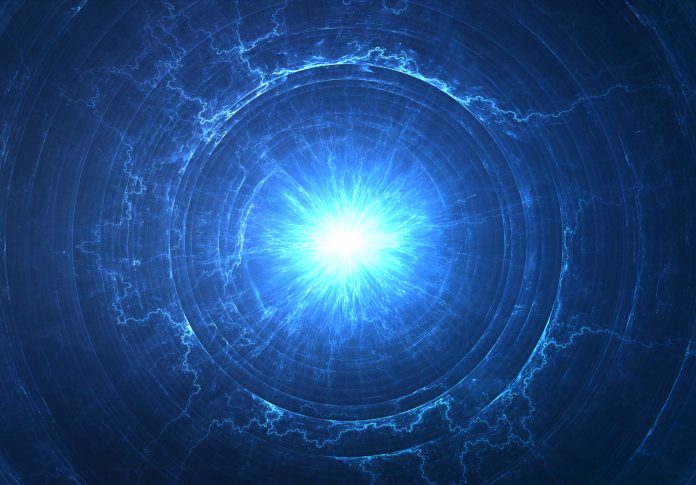Matteo Barbarino, Sehila Gonzalez de Vicente and Danas Ridikas from the International Atomic Energy Agency (IAEA) give some useful information about harnessing energy nuclear fusion
Providing energy from nuclear fusion is widely regarded as the grand engineering challenge in the energy field. Many researchers and engineers across the world are focusing on ways to produce this energy by recreating on earth the conditions, such as density and temperature, that naturally occur in stars.
Unlike nuclear fission, where atoms are split to produce energy, in fusion, lighter nuclei are joined together to create a heavier nucleus, resulting in the release of energy. This is how stars convert tiny amounts of mass into vast amounts of energy. Life on earth would not be possible without the nuclear fusion reactions that power the sun.
Despite the expected benefits of generating energy from fusion for society, such as the abundance and accessibility of fuel, the carbon-free footprint and the absence of high level radioactive waste, putting fusion into practice remains one of the most challenging areas of experimental physics and engineering today; controlling a fusion reaction at over 100 million degrees Celsius is a complex and challenging undertaking.
Once this challenge is overcome, fusion energy can become a virtually inexhaustible, safe, environmentally friendly and universally available energy source capable of meeting global energy needs.
How does fusion work?
At the core of a star, fusion reactions between hydrogen atoms take place within a dense plasma, with temperatures exceeding 10 million degrees Celsius. Plasma is the fourth state of matter and has unique properties, distinct from solids, liquids and gases. It consists of freely moving, charged particles and is formed at high temperatures when electrons are removed from neutral atoms. As we currently understand, more than 99% of the universe exists as plasma, including interstellar matter and stars, such as our sun.
In a controlled nuclear fusion power plant, three conditions must be fulfilled:
• Very high temperature (over 100 million degrees Celsius) to provoke collisions of highly energetic particles;
• Sufficient particle density in the plasma — where the reaction takes place — to increase the probability of these collisions and;
• Sufficient confinement to hold the plasma and enable the fusion reactions to take place on an ongoing basis.
To date, the confinement concept with the best results has been the tokamak, a doughnut-shaped configuration first invented in the 1950s, which uses powerful magnets to contain the plasma. Tokamak machines can already provide the essential conditions for fusion, in terms of both plasma density and the required temperature and fusion reactions can, therefore, be generated. What is still missing to ensure the production of net power is better and longer confinement, which is a measure of how good the magnetic field is at maintaining the plasma energy time.
ITER (International Fusion Energy Organization), a collaboration between 35 countries, will be the largest fusion experiment on earth. It is under construction in Saint-Paul-lez-Durance, France and is scheduled to become operational at the end of 2025.
ITER is designed to demonstrate much higher gains in fusion power than other fusion experiments conducted to date. Following the injection of 50 MW of heating power, it aims to produce 500 MW of thermal power for long pulses of 400 to 600 seconds. Even though ITER will not capture the power it produces as electricity, it will pave the way for a machine that can.
The next stage after ITER, converting heat into electricity, will be addressed by a demonstration fusion power plant known as DEMO. DEMO is expected to explore and demonstrate continuous or near-continuous operation, fuel self-sufficiency and the large-scale production of energy, including its conversion to electricity and could be connected to the power grid by approximately 2050.
Does fusion produce radioactive waste in the same way as nuclear fission?
The easiest fusion process to achieve involves two isotopes of hydrogen: deuterium and tritium. Tritium is radioactive, but its half-life is short (12.32 years). It is only used in relatively low amounts, so, unlike long-lived radioactive nuclei, it does not present any serious danger.
This deuterium-tritium reaction yields a helium atom (an inert gas) and a neutron, whose energies can be harvested for powering the reactor and producing electricity, respectively.
Therefore, fusion reactions do not create long-lived radioactive waste.
However, fusion will result in the generation of neutron-activated materials surrounding the plasma. In other words, when neutrons (as a result of fusion reaction) collide with the reactor walls, its structures and components become radioactive. Therefore, one of the important challenges when building future fusion power plants is to optimise the construction design in order to minimise this neutron-induced radioactivity and resulting radioactive waste volumes.
What is the IAEA’s role in fusion plasma and fusion technology?
Since its inception in 1957, the IAEA has continuously supported nuclear fusion research. The IAEA undertakes numerous nuclear fusion activities, under the guidance of the International Fusion Research Council, an IAEA advisory body with members from around the world.
The IAEA coordinates international efforts in fusion research and technology development by involving nuclear physicists, materials scientists, nuclear data specialists, engineers and plasma experts, among others. It also organises the Fusion Energy Conference — the world’s largest international event in the field of nuclear fusion.
Through the DEMO Programme Workshop, the IAEA also acts as a central hub in developing programme plans and initiating new research and development activities in order to formulate various concepts of demonstration fusion power reactors.
Through coordinated research activities, several networks of small fusion devices have been established and are being successfully used to enable an integrated approach in the quest for solutions to a number of outstanding issues.
Furthermore, the IAEA aims to broaden the education and training of the next generation of fusion scientists and engineers. This is particularly important, as fusion research and development activities increasingly involve technological sectors.
Division of Physical and Chemical Sciences
International Atomic Energy Agency
Fusion-physics@iaea.org
https://nucleus.iaea.org/sites/fusionportal
https://www.iaea.org/topics/fusion
https://www.iaea.org/publications/nuclear-fusion











